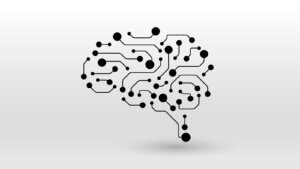|
|

Last week’s column explored some of the benefits of artificial intelligence when used in marketing and some of the reasons more marketers haven’t experimented with it, let alone adopt it.
But of course some have, and in this week’s column we’ll look at some common use cases for AI in marketing today.
One of the most common uses for AI today is in the area of production. Marketers are leveraging the power of AI to create data-driven content that often outperforms human-created content time and time again.
One of the most impressive AI tools out there will monitor what your website visitors are looking for but can’t find on your site. It then suggests what content you should create to fulfill that unresolved need.
Another tool will let you test content ideas before you create them. It will give you a performance score, indicating how useful your audience will find it before you invest the time to write it.
As you might imagine, one of the most common uses of AI is optimizing your existing content so it is more search engine friendly. The tool evaluates all of your existing content and overlays the most common search terms to see how you’d rank and makes suggestions for improvement.
Personalization is another common use for artificial intelligence. When a visitor is on the site, AI can recommend some highly targeted content based on the real-time data of the visitor’s actions at that moment. In the same way that relevant content can be served up, so can relevant offers that are tied to specific pages visited, queries, or even how long someone was on a particular page.
One of the most potent aspects of personalization is that you can create very customized experiences for your website visitors with some workflow expertise. You can genuinely give each of them a unique path to follow, tied to millions of data points about that and previous visits.
Smart marketers can also leverage artificial intelligence and machine learning to promote their products and services. One tool that some brands and agencies are leaning on will examine millions of social ads and each ad’s performance and then, based on the success metrics of those ads, will suggest tweaks to an ad that you’ve created.
The tweaks might be as simple as changing the color of the model’s shirt in the photograph or modifying a headline. This same tool will tell you exactly how long you should run the ad (the average right now is eight days) before swapping it out with a new ad. This saves the advertiser time and money that would typically be invested in A/B testing.
Another way AI is being used is to monitor social media and news outlets in real time and suggest related or tangential promotional opportunities.
As you would expect, one of the most critical aspects of marketing where AI can lend a hand is in measuring performance. The possibilities here are vast, and odds are you’re already deploying some of these solutions, even in a rudimentary form.
AI will simplify and improve your ability to measure your return on investment by giving you real-time success metric data by channel, by campaign, and over time. Not only will it help you determine success, but it can also give you insights as to why some elements of your campaign or a specific channel were more successful than others. Even better, you can use predictive modeling to point you in a more profitable and efficient direction for the next effort.
AI is here to stay. It’s up to us to decide how it can serve us best and how to leverage its capabilities. For marketers it’s a matter of how and when, not if.
This was originally published in the Des Moines Business Record, as one of Drew’s weekly columns.
